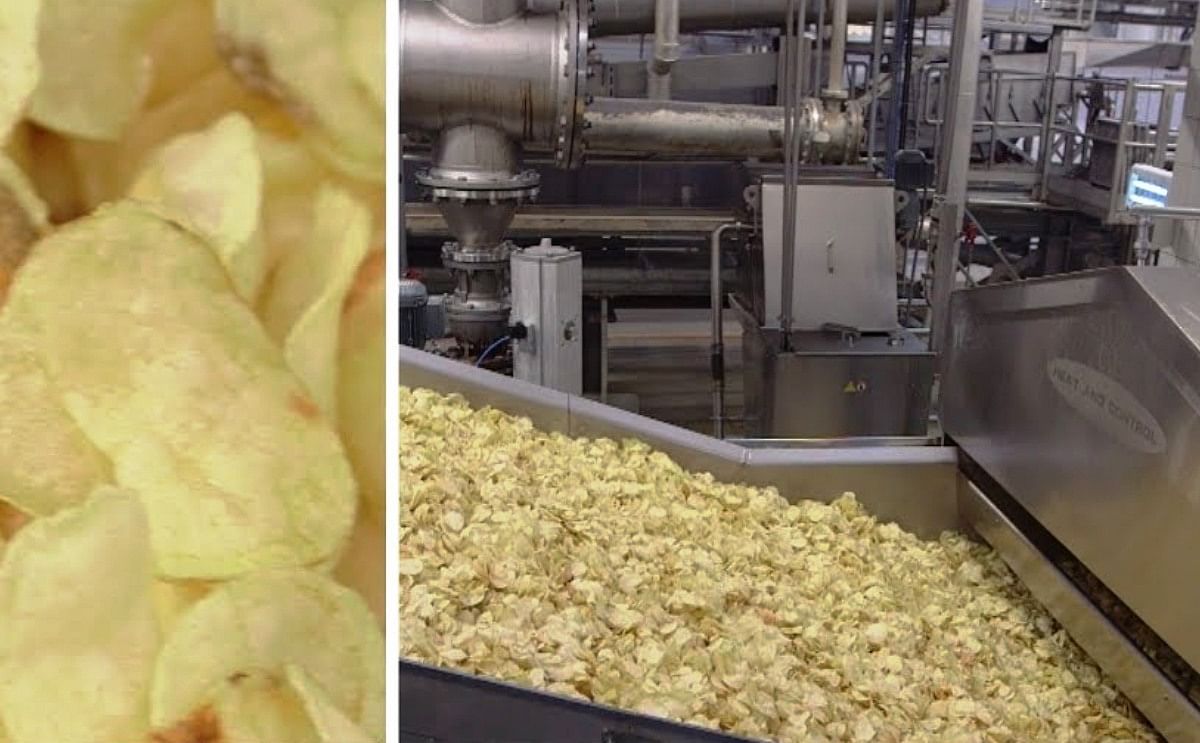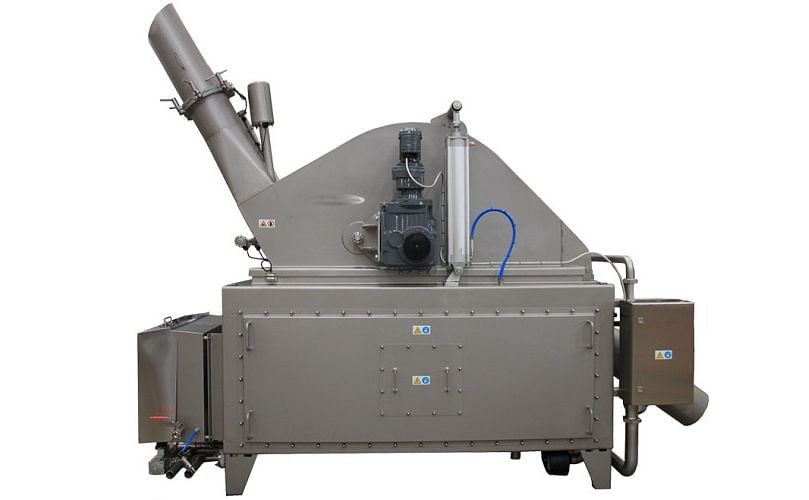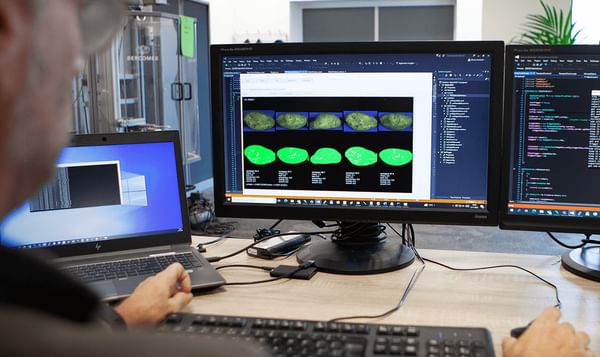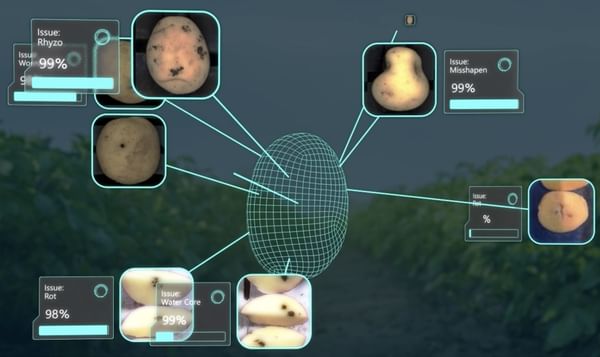Using Pulse Electric Field Processing (PEF) the patent protected E-FLO Electroporation System provides significant product improvement in chip crunch, taste and texture as well as reduction in acrylamide formation and oil content.
Heat and Control: Acrylamide in food

Ever since Swedish scientists discovered acrylamide in food in the early 2000s, there has been growing concerns over the potential negative impact it could have on people’s health, and some regulatory bodies have been looking at ways to restrict acrylamide levels in consumer products.
Acrylamide is a carcinogenic chemical which resides in starchy products like potatoes and forms when they are cooked at temperatures higher than 120 degrees Celsius. This chemical reaction is caused by the Maillard Process, when sugars and amino acids are released from the food and create the chemical known as acrylamide.

Acrylamide more commonly forms when the potatoes are fried, cooked or roasted than when they are steamed or boiled.
Global Regulations for Acrylamide in the potato industry
One of the challenges for food producers is keeping up with the ever-changing regulations for acrylamide levels. While most major Food Safety Authorities around the world are aware of acrylamide and its potential health dangers, the level of regulation can differ within each region.
The World Health Organisation and the International Agency for Research on Cancer has labelled acrylamide as “probably carcinogenic to humans”.
In April 2018, the new European Union legislation around Acrylamide came into effect, providing manufacturers with ‘benchmarking levels’ to limit the amount of acrylamide in packaged foods, including potato chips, French fries, cereal, bread and bakery goods like biscuits and cereal bars, as well as baby food.
Food manufacturers now need to ensure their products are below the benchmark levels, by introducing ‘mitigation measures’ to result in lower levels of acrylamide.
The benchmark levels will be reviewed every three years by the European Commission, reflecting the ongoing reductions in the presence of acrylamide in food. Food producers need to record sampling and data analysis results to determine the effectiveness of the benchmarking levels, which can be reviewed or checked by the EU.
While the US Food and Drug Administration (US FDA) does not enforce benchmark levels like the EU, they do provide a range of ‘possible approaches’ to acrylamide reduction with a guidance document.
The US FDA 'recommends that manufacturers evaluate approaches that may be relevant to their particular processes and consider adopting approaches, if feasible, that reduce acrylamide levels in their products'.
While consumer awareness of acrylamide and its related health implications are still relatively low, the increasing levels of regulation and research into its affects are seeing many potato manufacturers taking proactive steps to reduce acrylamide levels.
Food processors are looking to equipment suppliers to provide innovative solutions in this area, without compromising on taste or quality. Many producers are also seeing this as a way to market their products ‘healthier’ and using the opportunity to target more health conscious consumers.
These are a number of ways to reduce acrylamide levels in food, such as varying cooking temperatures; storing raw product in different ways; harvesting at different times of the year; ingredient additions; or changing growing conditions altogether.
But these methods can affect long-term costs and have negative effects on the taste on your products, and will only reduce acrylamide by a small amount.
The Benefits of reducing acrylamide through frying
Frying systems are an important part in acrylamide management, as the fryer will need to maintain a consistently low oil temperature to prevent the release of sugars and amino acids which cause the formation of acrylamide.
The use of vacuum frying has become a great way to reduce acrylamide levels, as they have the ability to keep the frying oil temperature below 120 degrees Celsius, the point at which acrylamide forms.
Unitized Vacuum Fryers operate at ten per cent or less of normal atmospheric pressure, so the moisture boils off at lower temperatures. This means it can fry products with a higher sugar content, like potatoes, without over Potato Pro_Acrylamide_2019 Page 3 of 6 browning.
Vacuum fryers have many other production benefits, such as an self contained vacuum chamber to reduce floor space and labour costs.
The Benefits of Reducing Acrylamide through Electroporation
One of the most popular methods of reducing acrylamide levels by over 50 per cent is through a process called electroporation. This technique involves electrical fields being sent through a cell in order to perforate the membrane with microscopic holes.
In the case of potatoes and other root vegetables, this process allows sugars and amino acids to be released from the potato prior to cooking, which in turn lessens the occurrence of acrylamide.
An example of one such machine is the E-FLO™, which produces high quality chips or french fries with less acrylamide, while still maintaining the original taste of your potato products.

The E-FLO uses Pulsed Electric Field (PEF) technology to send electric fields through the potato.
Peeled and washed potatoes are supplied in measured quantities by upstream equipment and delivered to the E-FLO infeed chute. The rotating E-FLO wheel transports the potatoes through the processing area as a compact packed bed through a water bath.
Processing has to take place in a water bath for the electrical pulses to influence the product as desired. After a short exposure to the electric field pulses, to perforate the cell walls, the potatoes are lifted and discharged from the water bath by the continuing rotation of the wheel into the discharge chute.
The potato then continues down the production line where greater amounts of sugars and amino acids can be removed during the slicing and washing stages. E-FLO has seen excellent results for both potato chips and french fries, with a reduction in acrylamide of over 50 per cent, in some test cases.
Benefits of Electroporation with the E-FLO
Aside from reducing acrylamide and creating a healthier product, there are a number of benefits electroporation can offer to increase yields and offer a significant return on capital investment.
Less blanching
During the electroporation process, the tissue of the potato becomes more permeable, reducing the need and amount of time for blanching before cooking. This results in shorter preparation time and reduced water and energy usage.
Less wear and tear on slicing blades
Slicing thousands of potatoes daily can quickly result in dull slicer blades. The E-FLO, however softens the tissue of the potato, allowing the blades to slice between the cells of the potato rather than through them. This lessens the pressure and friction on your tools, which means less down time and longer equipment life.
Reduction in oil use
Slicing between the cells of the potato also produces a smoother chip surface. A smoother surface means the chip absorbs less oil, which, in the long run, can significantly reduce your oil expenditure.
Health Benefits
Pulsed electric field treatment can typically reduce the fat content of the final potato by two to three per cent. This is due to increased starch content in the outer cell layers of the potato slices and smoother surface after cutting, which enhances the oil drip off effect after frying.
Can be used across a variety of products
The E-FLO has the potential to work on a range of products, such as differing root vegetables, making them easier to process. Because the E-FLO softens the tissue of the raw product, different cutting technology can be used to create new shapes more easily.
How the equipment functions as part of a processing line
The introduction of the E-FLO and the Pulsed Electric Field Processing treatment of whole potatoes prior to slicing has been instrumental in reducing Acrylamide levels in finished potato chips.
The E-FLO can be integrated into any existing potato line in between the peeling and slicing stages of production, and providing invaluable production benefits through the line.
It will reduce capital costs for the producer and requires low voltage and minimal maintenance, resulting in optimised performance.
Considerations for potato processers when purchasing equipment for acrylamide reduction
Given the increasing costs of running a facility, with sky rocketing energy and water costs, processors need to complete their due diligence when investing in significant upgrades to their equipment.
The initial capital outlay can be prohibitive for some processors, however shortening payback periods and the many advantages and cost-savings that happen over the processing life of the equipment is encouraging more companies to invest.
Processors should work with a reputable company that will take a holistic view of their manufacturing line to ensure all components are fully integrated, whether a new build or a retrofit into an existing line.
They need to consider if the equipment has enough long term benefits to see a return on their investment, by offering the cost savings achieved through less blanching time, slicing blades staying sharper for longer and oil reduction.











